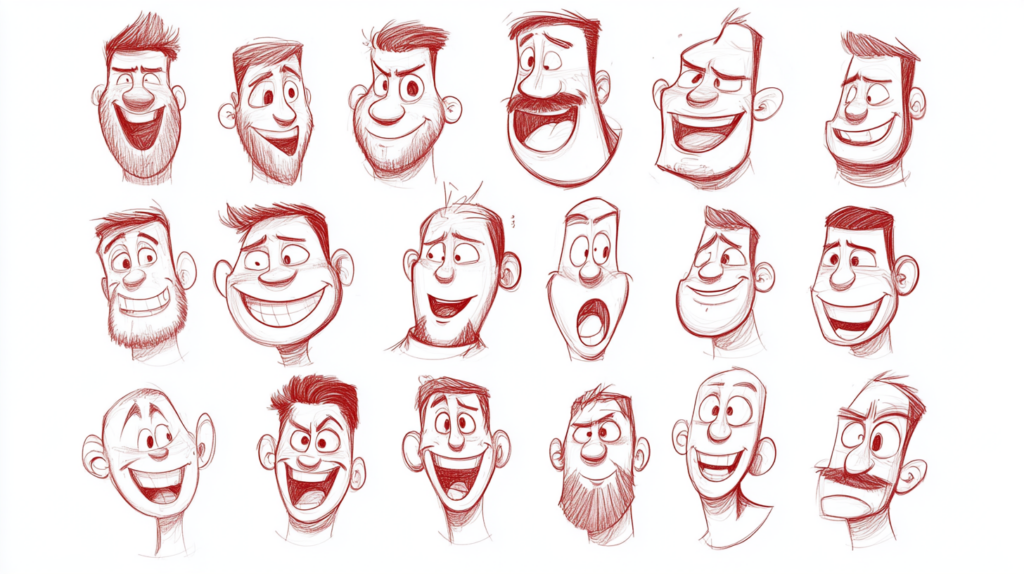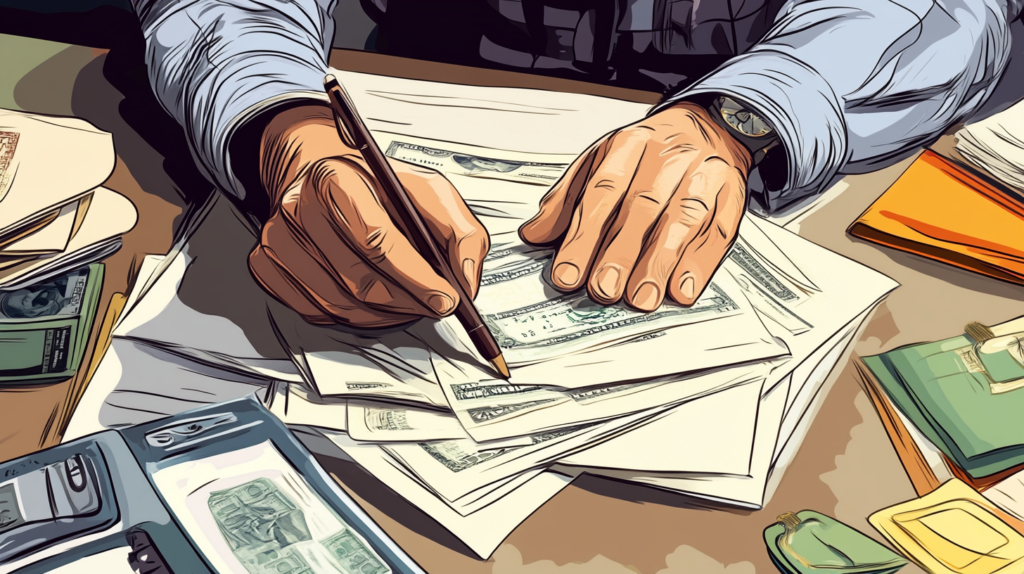Turning your passion for cartoon drawing into a profitable venture is a dream many artists aspire to achieve. The good news is that there are numerous ways to monetize your cartoon art, whether you’re a hobbyist looking to earn some extra income or a professional seeking to build a sustainable career. This guide will explore various avenues to profit from cartoon drawing, providing strategies and tips to help you succeed.
1. Sell Original Artwork and Prints
Online Marketplaces
One of the simplest ways to start profiting from your cartoon drawings is by selling original artwork and prints online. Platforms like Etsy, Redbubble, and Society6 allow you to reach a global audience. These sites let you sell:
- Original Art: If you create traditional art, you can sell your original drawings, paintings, or illustrations.
- Prints: Digital art can be turned into high-quality prints, which are popular and affordable options for customers. You can offer various sizes and formats, including framed prints, canvas prints, or posters.
Personal Website
Creating your own website to sell artwork gives you more control over pricing, branding, and customer relationships. A website can also serve as a hub for your portfolio, blog, and contact information. Platforms like Shopify, Squarespace, and Big Cartel make it easy to set up an e-commerce store with customizable options.
Art Fairs and Conventions
Participating in art fairs, comic conventions, and local markets is another way to sell your cartoon art. These events allow you to connect directly with customers, build a fanbase, and get immediate feedback on your work. Make sure to have a range of products, from affordable prints and stickers to more expensive original pieces, to cater to different budgets.

2. Create and Sell Merchandise
Print-On-Demand Products
Print-on-demand (POD) services are a hassle-free way to create and sell merchandise featuring your cartoon art. Platforms like Redbubble, Society6, and Teespring handle printing, shipping, and customer service, allowing you to focus on creating designs. Popular POD products include:
- T-Shirts and Apparel
- Stickers and Decals
- Mugs and Drinkware
- Phone Cases
- Tote Bags
- Home Decor Items
Custom Merchandise
If you want to offer more personalized or unique products, consider working with a local printer or manufacturer to create custom merchandise. Items like enamel pins, patches, or limited edition prints can command higher prices and create a sense of exclusivity.
Crowdfunding Campaigns
Platforms like Kickstarter and Indiegogo allow you to fund the production of merchandise by pre-selling products through a crowdfunding campaign. This approach can minimize financial risk and gauge interest in your products before committing to a large production run.

3. Offer Commissions and Custom Work
Custom Cartoon Portraits
Offering custom cartoon portraits is a popular and profitable service. Clients might commission you to create cartoon versions of themselves, their pets, or their families. These can be digital or traditional artworks, and you can offer different styles or themes to attract a broader audience.
Character Design Commissions
If you excel at character design, offer commissions for custom characters. These could be for personal use, role-playing games, or even indie game developers. Establish clear pricing and guidelines based on the complexity of the design, the number of revisions, and usage rights.
Business and Branding Services
Many businesses are looking for unique cartoon characters to use in their branding, marketing, or product design. Offering services like mascot design, logo creation, or custom illustrations for websites and social media can be a lucrative niche. Reach out to small businesses, startups, or entrepreneurs who might benefit from your creative services.

4. Teach Cartoon Drawing
Online Courses and Tutorials
If you have a knack for teaching, consider creating online courses or tutorials to help others learn cartoon drawing. Platforms like Skillshare, Udemy, and Teachable allow you to create video courses and earn revenue from enrollments. You can also offer live workshops or one-on-one lessons via Zoom.
YouTube Channel
Starting a YouTube channel dedicated to cartoon drawing tutorials can generate income through ad revenue, sponsorships, and affiliate marketing. Consistently posting high-quality content that teaches specific techniques, such as character design, inking, or digital coloring, can attract a large audience over time.
Ebooks and Guides
Write and self-publish ebooks or instructional guides on cartoon drawing techniques. These can range from beginner’s guides to advanced tutorials on specific styles or tools. You can sell these ebooks on your website, Amazon Kindle, or other digital platforms.

5. Freelance Illustration and Animation
Editorial and Advertising Illustration
Many magazines, newspapers, and websites need illustrations to accompany articles, editorials, and advertisements. If you enjoy working with clients and meeting deadlines, consider offering your services as a freelance illustrator. Building a strong portfolio that showcases your versatility and style is key to landing these gigs.
Children’s Book Illustration
Illustrating children’s books is a rewarding and potentially profitable niche. If you enjoy storytelling and creating characters, consider reaching out to authors, publishers, or self-publishing your own illustrated books. The children’s book market is competitive, so having a unique style and a well-crafted portfolio is essential.
Animation and Storyboarding
If you’re skilled in animation, there are opportunities in TV, film, video games, and online content creation. Freelance animators and storyboard artists can work on a variety of projects, from short films and commercials to explainer videos and social media content. Platforms like Upwork, Fiverr, and Behance can help you find freelance work in this field.

6. Create Webcomics and Graphic Novels
Start a Webcomic
Webcomics are a popular way to share your cartoon art with a broad audience. Platforms like Toons Mag, Cartoonist Network, Easybie, Webtoon, Tapas, and your own website allow you to publish your comics regularly and build a following. While starting a webcomic may not generate immediate income, successful webcomics often lead to monetization opportunities through:
- Ad Revenue: Earn income from ads displayed on your webcomic’s website or platform.
- Merchandise: Sell merchandise related to your webcomic, such as prints, T-shirts, and books.
- Patreon: Offer exclusive content or early access to your comics in exchange for monthly subscriptions from your fans.
Self-Publish a Graphic Novel
If you have a longer story to tell, consider self-publishing a graphic novel. Crowdfunding platforms like Kickstarter can help you raise funds for printing and distribution. Once published, you can sell your graphic novel through your website, online bookstores, or at conventions.
Pitch to Publishers
If self-publishing isn’t for you, consider pitching your comic or graphic novel to traditional publishers. Research publishers who specialize in graphic novels or comics and follow their submission guidelines. Getting published traditionally can provide greater exposure and access to professional editing, marketing, and distribution.

7. Monetize Your Social Media Presence
Build a Strong Social Media Following
A large and engaged social media following can open up numerous monetization opportunities. Focus on building your presence on platforms like Toons Mag, Cartoonist Network, Instagram, TikTok, and Twitter by consistently posting high-quality content, engaging with your audience, and participating in art challenges or collaborations.
Sponsored Posts and Brand Partnerships
Once you have a sizable following, brands may approach you for sponsored posts or collaborations. Sponsored content can range from product reviews and tutorials to creating custom artwork for a brand’s marketing campaign. Always ensure that partnerships align with your brand and values to maintain trust with your audience.
Affiliate Marketing
Affiliate marketing involves promoting products or services through special links that track sales or referrals. You earn a commission for every sale made through your link. This can be an effective way to monetize a blog, YouTube channel, or social media account, especially if you recommend art supplies, digital tools, or educational resources.

8. Diversify Your Income Streams
Multiple Revenue Sources
To create a sustainable income from cartoon drawing, it’s important to diversify your revenue streams. Combining different income sources, such as selling prints, offering commissions, teaching, freelancing, and creating merchandise, can help you achieve financial stability and reduce reliance on any one method.
Create Passive Income
Passive income involves earning money with minimal ongoing effort after the initial work is done. For cartoonists, this could include selling digital products like brushes, textures, and templates, licensing your artwork, or publishing ebooks and online courses. The key is to create products that continue to generate sales over time.
Invest in Marketing and Branding
Investing in marketing and branding is essential for growing your business and increasing your income. This includes developing a strong personal brand, optimizing your website for search engines, running targeted ads, and engaging with your audience on social media. Building a recognizable brand can lead to higher demand for your work and better pricing opportunities.

9. Plan for the Future
Set Financial Goals
Establish clear financial goals for your cartoon drawing business. This could include monthly income targets, savings goals, or plans for reinvesting in your business. Regularly review your financial progress and adjust your strategies as needed to stay on track.
Expand Your Skills
Continuously improving your skills is crucial for staying competitive and expanding your income opportunities. Take courses, attend workshops, and experiment with new styles and techniques. Staying current with industry trends and tools will keep your work fresh and in demand.
Consider Hiring Help
As your business grows, you may reach a point where you need help with tasks like marketing, administration, or production. Hiring assistants, freelancers, or partnering with a business manager can free up more of your time for creative work and help scale your business.
Turning Your Passion into Profit
Profiting from cartoon drawing is a rewarding journey that combines creativity with business savvy. By exploring multiple income streams, building a strong online presence, and continuously improving your skills, you can turn your passion for cartoon art into a profitable and sustainable career. The key is to remain flexible, keep experimenting, and stay committed to your goals. With the right approach and dedication, you can make a living doing what you love.
Frequently Asked Questions about Profiting from Cartoon Drawing
What are the primary ways to make money from cartoon drawing?
- Freelance Work: Take on freelance projects such as custom illustrations, comic strips, editorial cartoons, or design work for clients.
- Selling Artwork: Sell your cartoon artwork through online marketplaces, art galleries, or your own website.
- Licensing and Royalties: License your characters or illustrations for use in merchandise, media, or publishing, earning royalties from their use.
- Merchandising: Create and sell products featuring your cartoons, such as t-shirts, mugs, posters, or digital goods.
- Comics and Webcomics: Publish and monetize comic strips or webcomics through platforms like Patreon, webcomic sites, or crowdfunding.
How can I start earning money from freelance cartoon work?
- Build a Portfolio: Create a diverse and high-quality portfolio showcasing your cartooning skills.
- Find Clients: Look for freelance opportunities on platforms like Upwork, Fiverr, or Freelancer, or reach out to potential clients directly.
- Network: Connect with industry professionals, join relevant groups, and attend events to find freelance opportunities and build relationships.
- Market Yourself: Promote your services through a personal website, social media, and online portfolios to attract clients.
What platforms are best for selling cartoon artwork?
- Online Marketplaces: Sites like Etsy, Redbubble, Society6, and Zazzle allow you to sell prints and merchandise featuring your cartoons.
- Personal Website: Set up an e-commerce section on your own website to sell digital downloads or physical products directly to customers.
- Art Galleries: Submit your work to local or online art galleries that accept cartoon or comic art for sale.
How can I effectively license my cartoon characters and illustrations?
- Protect Your Work: Register your copyrights and trademarks to protect your characters and illustrations from unauthorized use.
- Create a Licensing Agreement: Draft clear licensing agreements that outline how your work can be used, the duration, and payment terms.
- Partner with Licensing Agents: Consider working with a licensing agent who can help negotiate deals and manage licensing agreements.
- Promote Your Characters: Showcase your characters and their potential uses to attract companies or publishers interested in licensing.
What are some successful merchandising strategies for cartoon drawings?
- Identify Popular Characters: Focus on your most popular and recognizable characters for merchandise.
- Choose the Right Products: Select products that fit your audience, such as apparel, home goods, or stationery.
- Work with Print-on-Demand Services: Use print-on-demand services to handle production, shipping, and fulfillment, reducing upfront costs.
- Promote Through Social Media: Use social media platforms to market your merchandise, offer special promotions, and engage with your audience.
How can I monetize webcomics or comic strips?
- Crowdfunding: Use platforms like Kickstarter or Indiegogo to fund your webcomic projects or special editions.
- Patreon: Set up a Patreon page to offer exclusive content, early access, or other perks to subscribers who support your work.
- Advertising and Sponsorships: Incorporate ads or seek sponsorships within your webcomic to generate revenue.
- Digital Sales: Sell digital versions of your webcomics or comic strips through your own website or digital marketplaces.
What are the best practices for pricing cartoon work?
- Research Market Rates: Understand the going rates for different types of cartoon work to set competitive prices.
- Consider Time and Effort: Base your pricing on the time and effort required to complete each project.
- Offer Packages: Provide pricing packages for different types of work or bulk orders to make it easier for clients to choose.
- Be Transparent: Clearly communicate your pricing structure and any additional costs upfront to avoid misunderstandings.
How can I grow my audience and increase my earnings as a cartoonist?
- Create Engaging Content: Produce high-quality, relatable, and entertaining content that resonates with your target audience.
- Utilize Social Media: Actively engage with your audience on social media platforms to build a following and promote your work.
- Collaborate with Others: Partner with other artists, influencers, or brands to reach new audiences and expand your network.
- Offer Value: Provide additional value through exclusive content, merchandise, or interactive experiences to keep your audience engaged and willing to support you financially.
How can I handle the business side of a cartooning career?
- Keep Records: Maintain detailed records of your income, expenses, and contracts for tax and financial management.
- Understand Contracts: Read and understand contracts thoroughly before signing, and seek legal advice if needed.
- Manage Finances: Budget effectively, set aside money for taxes, and consider consulting a financial advisor for long-term planning.
- Stay Organized: Use project management tools and software to keep track of deadlines, client communications, and project details.
What are the potential challenges in profiting from cartoon drawing, and how can I overcome them?
- Market Saturation: Differentiate yourself by developing a unique style and finding a niche audience.
- Pricing Issues: Set fair and competitive prices while ensuring you are compensated adequately for your work.
- Building an Audience: Consistently produce quality work and actively promote it to grow your audience and attract paying customers.
- Managing Workload: Balance multiple projects and client demands by staying organized and setting clear boundaries.
Profiting from cartoon drawing involves leveraging your skills and creativity to create valuable work, finding and managing clients, and exploring various revenue streams. By focusing on building a strong portfolio, marketing effectively, and staying organized, you can turn your passion for cartooning into a profitable career.
This post was created with our nice and easy submission form. Create your post!




